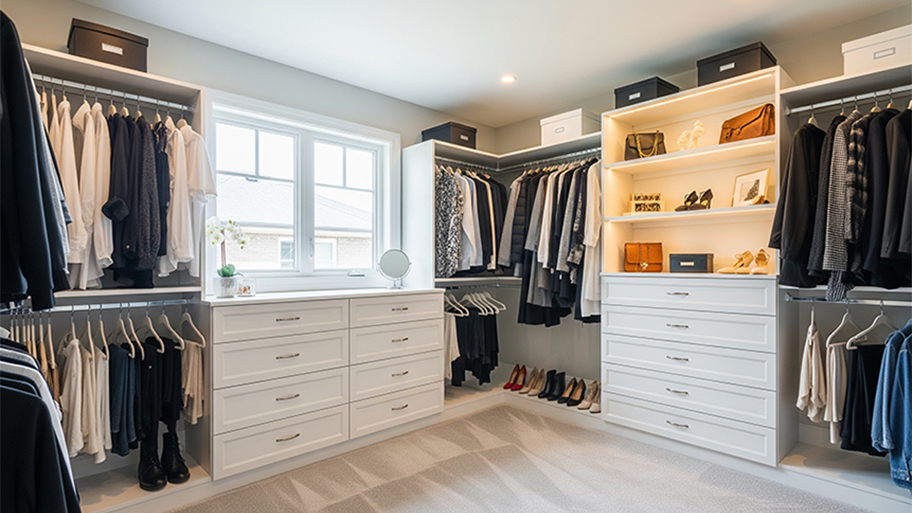
The cost of a closet remodel depends on the closet size, materials used, and the level of customization. Learn what else influences your closet remodel cost.
The average custom closet cost ranges between $1,081 and $3,258, with most homeowners spending an average of $2,154. Size, materials, and design complexity are the main cost factors.
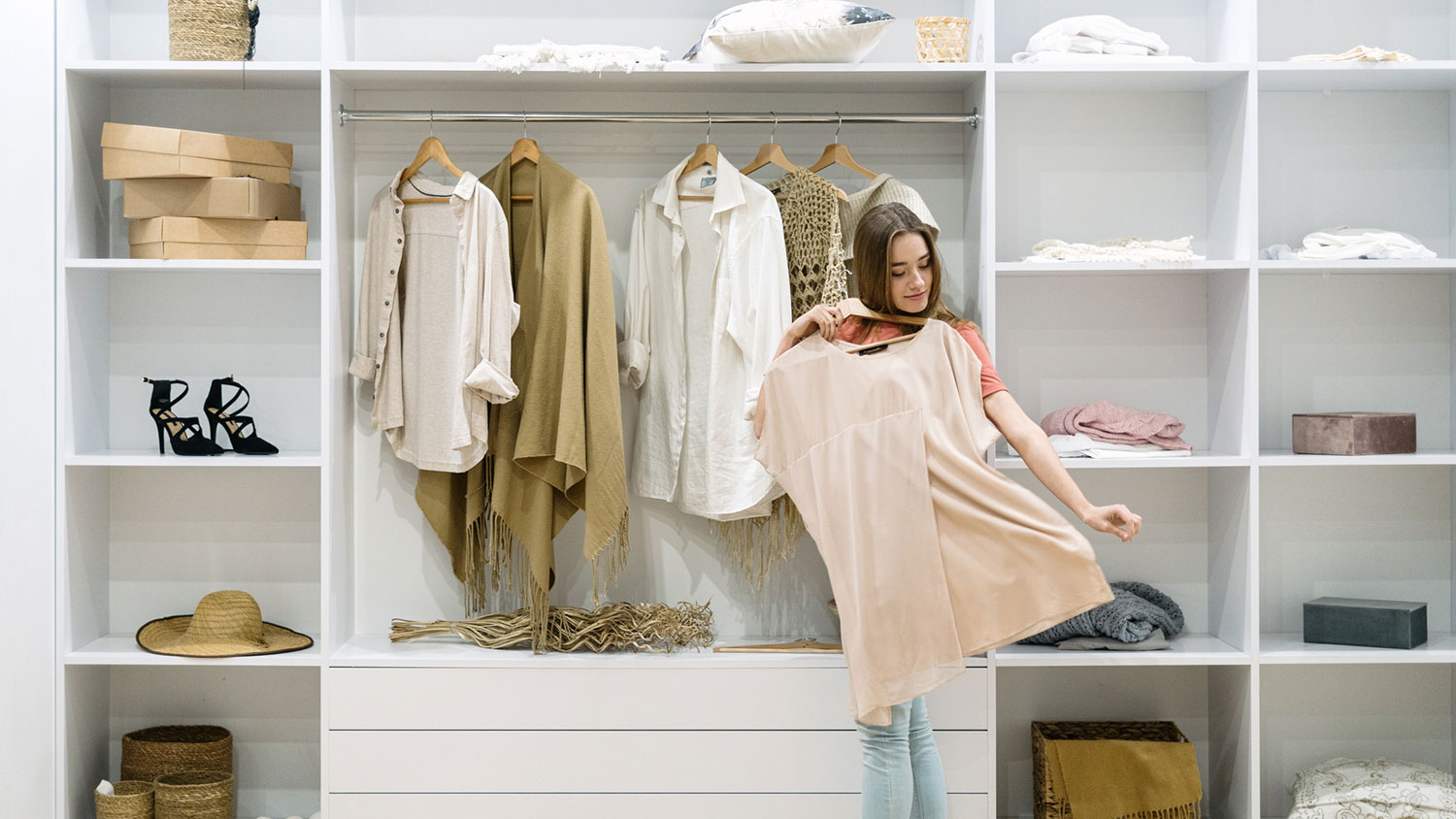

The main custom closet cost factors are materials, size, labor, and features like lighting or islands.
For most projects, expect to pay $30 to $50 per square foot, with add-ons such as built-in lighting or decorative hardware increasing the total cost.
Professional labor ranges from $40 to $120 per hour and ensures quality, durable results.
Features like racks, shelves, and mirrors range from $50 to $500.
This article was created using automation technology and thoroughly fact-checked and edited by an Angi Editor in accordance with our AI policy.
Custom closet costs average $1,081 and $3,258, with an average price of $2,154. Costs depend on closet size, materials, and design features. Expect to pay $30 to $50 per square foot for most custom closet installations. Understanding these costs helps homeowners budget for a personalized storage solution that brings both function and style to their space.
Let’s take a closer look at what goes into the final price, so you can make confident decisions about your custom closet project.
When planning a custom closet, several factors will influence the total cost. Let’s break down the biggest contributors, from closet type to finishing touches.
The type of closet you choose has a major impact on custom closet costs. Reach-in closets are the most affordable, while walk-in and specialty closets come with higher price tags due to their size and complexity. Wardrobe closets and unique specialty builds add custom features or solve specific storage challenges. Each closet type offers different levels of storage, design options, and installation complexity, which all factor into the final cost.
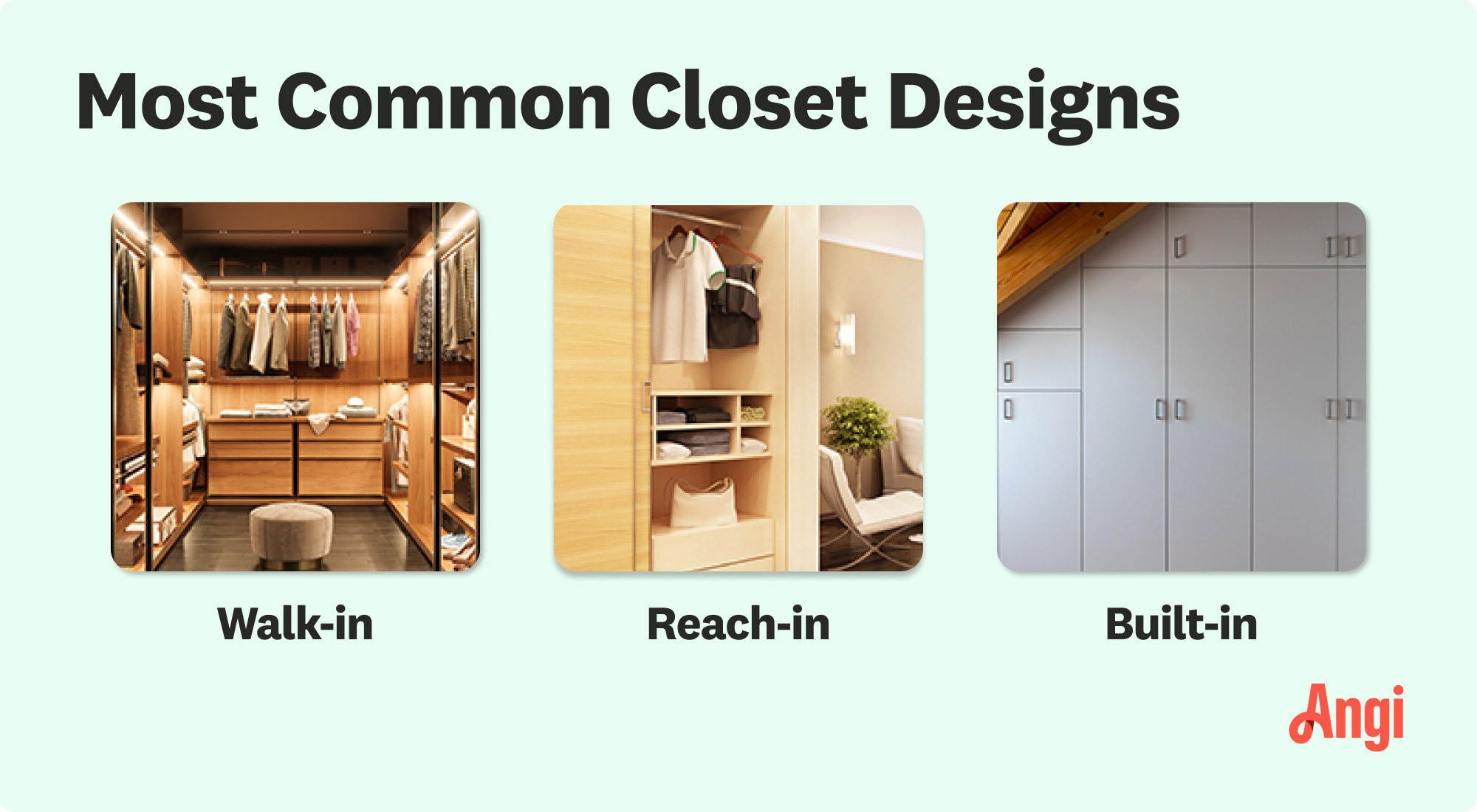
| Closet Type | Average Cost |
|---|---|
| Reach-in | $500–$3,000 |
| Walk-in | $1,000–$8,000 |
| Built-in wardrobe | $2,000–$6,000 |
| Free-standing wardrobe | $1,000–$3,000 |
Closet size is one of the most direct drivers of custom closet cost. Larger closets require more materials and labor. Most custom closets are priced by square foot or linear foot, with higher prices for larger or more complex layouts. A small reach-in closet is the most budget-friendly, while a spacious walk-in with premium features will increase the investment.
| Closet Size (Sq. Ft.) | Average Cost | Description |
|---|---|---|
| 10 | $1,200 | Small reach-in bedroom closet |
| 25 | $2,500 | Medium walk-in or hall closet |
| 50 | $5,000 | Large master walk-in closet |
Material selection plays a big role in your custom closet cost. Choices range from cost-effective laminates and MDF (medium-density fiberboard) to high-end solid cedar.
Upgrades like soft-close drawers or decorative hardware can also add to the price. Hardware and accessories such as handles, rods, and specialty shelving can add $10 to $200 per item, depending on quality and finish.
| Material Type | Average Cost per Linear Foot | Notes |
|---|---|---|
| Laminate | $125–$150 | Cost-effective, easy to clean |
| MDF | $140–$240 | Smooth finish, customizable |
| Cedar | $200–$500 | Durable, high-end look |
| Plywood | $150–$500 | Durable, mid-range |
Several professionals may be involved in a custom closet project, including designers, carpenters, and closet installers. Labor costs depend on your location, the complexity of the design, and any custom features you select. Hourly rates range from $40 to $120, or you may be quoted a flat project fee.
Complex projects or high-end customizations require more time and skilled labor. Urban areas and regions with a higher cost of living will often see increased labor rates. Always review quotes carefully and ask about what’s included—design, installation, and any follow-up adjustments.
Preparing your closet space for a custom installation sometimes involves removing existing shelving, patching holes, or repairing drywall. Costs for this prep work vary, but simple removal and patching may add $100 to $500. If your project is part of a new build, site prep may be minimal, while remodels can involve extra demolition or repair.
Disposal of old materials and post-construction cleanup can incur additional fees, especially for large or built-in closet systems.
Tipping for custom closet installers is not required, but it is a thoughtful way to show appreciation for quality work. If you choose to tip, $20 to $50 per installer is a common range for a standard job. Alternatively, a positive online review or a personal thank-you note can also go a long way in expressing gratitude.
A few other factors may impact your custom closet cost:
Demolition of old closet structures, especially with built-in units, can add $200 to $600.
Post-construction cleanup fees may range from $50 to $150.
Permits are rarely needed unless structural or electrical changes are made, but if required, permit fees can run $50 to $300.
Foundation or framing adjustments for major remodels can add significant cost if walls or supports need modification.
Electrical upgrades, like adding outlets or integrated LED lighting, can add $200 to $800.
Decorative add-ons such as mirrors, glass doors, custom paint, or wallpaper increase both materials and labor costs.
Specialty features like jewelry drawers, shoe racks, and pull-out accessories can each add $50 to $500, depending on complexity.
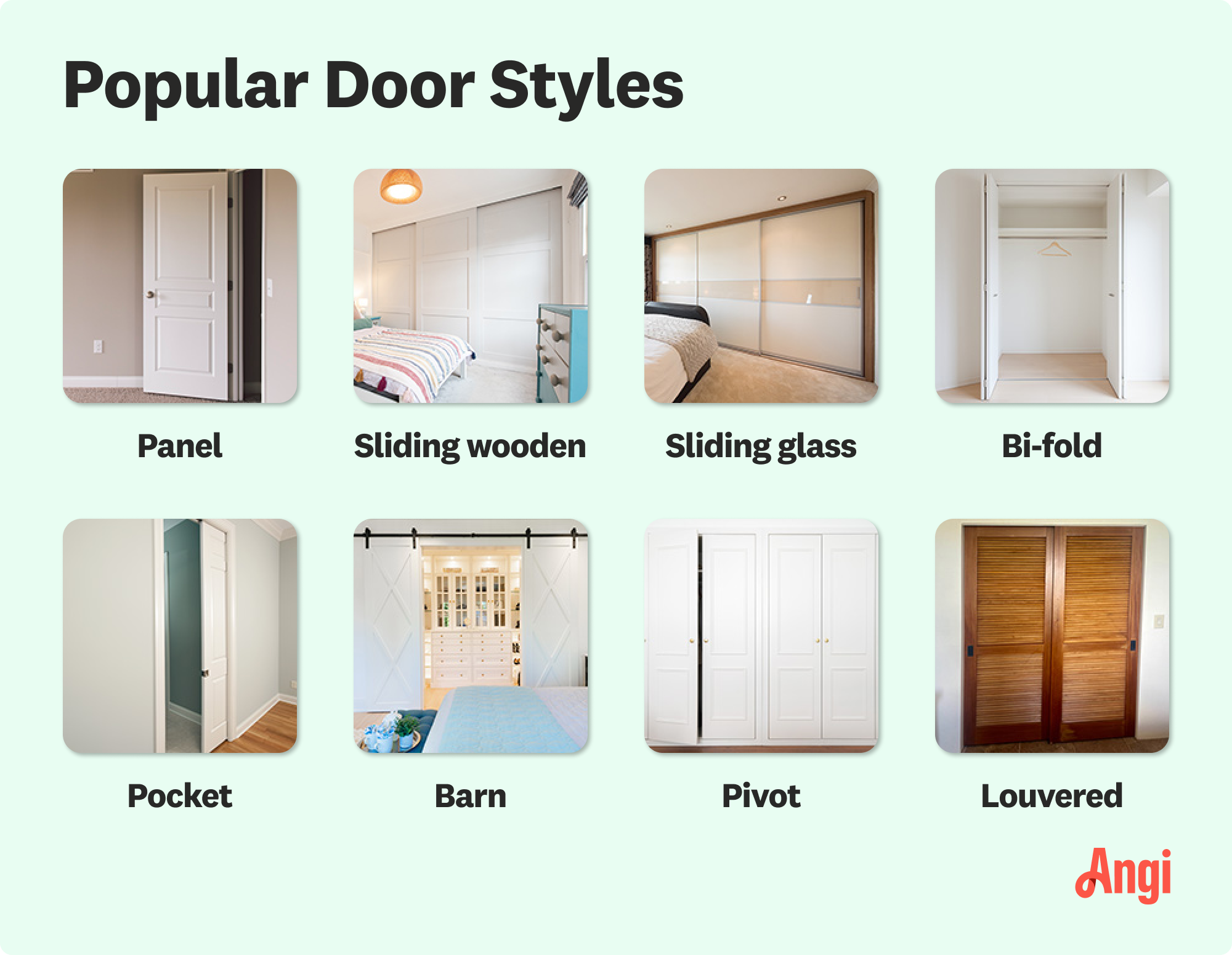
Custom closets are designed for durability and convenience, but there are a few ongoing costs to consider.
Routine cleaning is essential for keeping your custom closet looking and working its best. Wipe down shelves, dust surfaces, and occasionally vacuum or mop the floor. Hardware may need periodic tightening or lubrication. If you opt for professional cleaning or maintenance, expect to pay $100 to $300 per visit, depending on scope and materials.
To preserve the finish, use gentle cleaners and avoid harsh chemicals, especially on wood or painted surfaces.
Closets with integrated lighting, charging stations, or powered accessories will see a slight increase in utility bills. LED lighting is energy-efficient and costs only a few dollars per year to run. Battery-powered accessories require periodic battery replacement, averaging $10 to $30 per year. Smart closet features, such as automated lighting or climate control, may add to your electricity use, but these costs remain minimal for most homes.
Over time, you may need to repair shelves, replace hardware, or touch up finishes. Minor repairs—like tightening a loose rod or fixing a drawer—often cost $50 to $100 if you hire a handyperson. Major repairs, such as replacing warped shelving or refinishing wood, can cost $200 to $800. Many homeowners handle small fixes themselves, but for complex or warranty-covered issues, it’s best to work with a professional.
Upgrading your closet with a high-value custom system may affect your homeowners' insurance. While most standard policies cover built-in closets, you may want to add extra coverage if you store high-value items (like jewelry or designer clothing) or if your closet is a significant investment. Adding coverage costs $50 to $200 annually, depending on the value of the improvements and contents.

Some homeowners consider installing a custom closet themselves to save on labor. Let’s look at the cost differences and what each approach involves.
DIY custom closet installation requires you to purchase all materials and tools, which can total $500 to $2,000 for a basic project. You’ll need skills in measuring, cutting, and assembling shelving and hardware. While you save on labor costs, mistakes or rework can increase both time and expense.
Hiring a professional means paying for expert design, precise installation, and often a warranty on workmanship. Pros have access to custom materials and can handle complex features, but the total cost is higher due to labor.
DIY projects can be rewarding for those with the right skills and time, but hiring a pro ensures quality, safety, and durability—especially for larger or more intricate closets.
Many homeowners choose to personalize their custom closets with add-ons. Here’s what you can expect to pay for popular options:
Built-in lighting (LED strips, puck lights): $200 to $800
Closet islands or dressers: $1,000 to $3,000
Shoe racks or cubbies: $50 to $200 each
Jewelry organizers and pull-out trays: $75 to $200 each
Mirrors (full-length, door-mounted): $100 to $500
Sliding or glass doors: $500 to $5,000
Decorative hardware upgrades: $50 to $300
Smart closet features (lighting, sensors): $200 to $1,000
Each add-on increases the total custom closet cost, so prioritize features that match your needs and budget.
Consider these cost-saving strategies to make your custom closet project more budget-friendly:
Choose standard sizes and layouts over highly customized designs.
Opt for cost-effective materials like laminate or MDF.
Limit specialty features and luxury add-ons.
Get multiple quotes from reputable local closet installers to compare rates.
Prepare the space yourself (demolition, painting) to reduce labor fees.
Bundle multiple closets or storage projects for discounts.
Schedule installation during off-peak times for potential savings.
Reuse existing hardware or shelving where possible.
Consider semi-custom or modular closet systems for a lower cost.
Home is the most important place on earth, which is why Angi has helped more than 150 million homeowners transform their houses into homes they adore. To help homeowners with their next project, Angi provides readers with the most accurate cost data and upholds strict editorial standards. We extensively research project costs to develop the pricing data you see, so you can make the best decisions for you and your home. We rely on reputable sources, including the U.S. Bureau of Labor Statistics, academic journals, market studies, and interviews with industry experts—all to ensure our prices reflect real-world projects.
Want to help us improve our cost data? Send us a recent project quote to [email protected]. Quotes and personal information will not be shared publicly.
From average costs to expert advice, get all the answers you need to get your job done.

The cost of a closet remodel depends on the closet size, materials used, and the level of customization. Learn what else influences your closet remodel cost.

Discover the cost to hire a professional closet organizer, including average prices, cost factors, and tips to help you budget and maximize your investment.
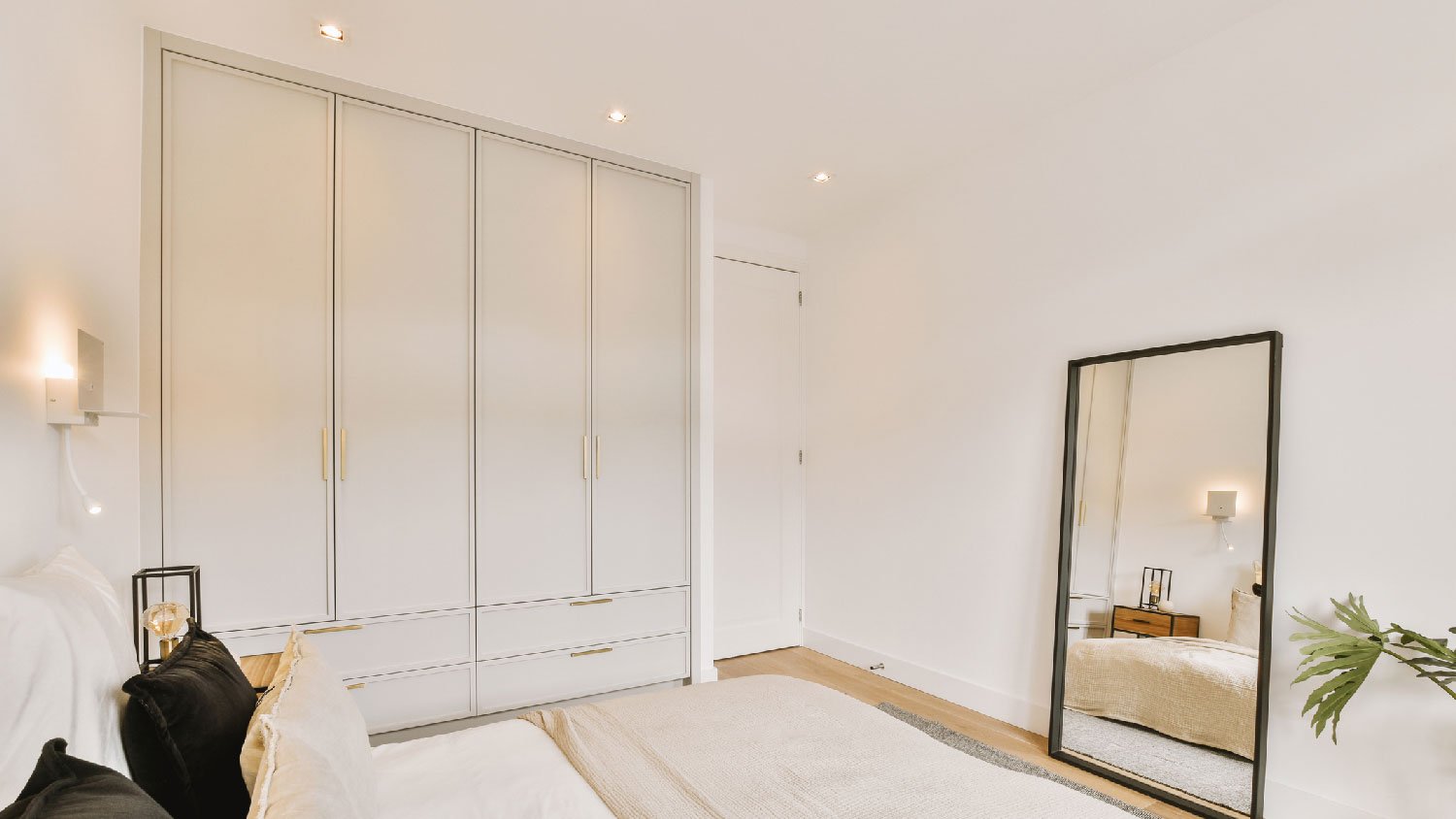
Learning how to build a closet can be a challenging DIY job. If you don’t have the right tools or know-how, consider hiring a professional for help.
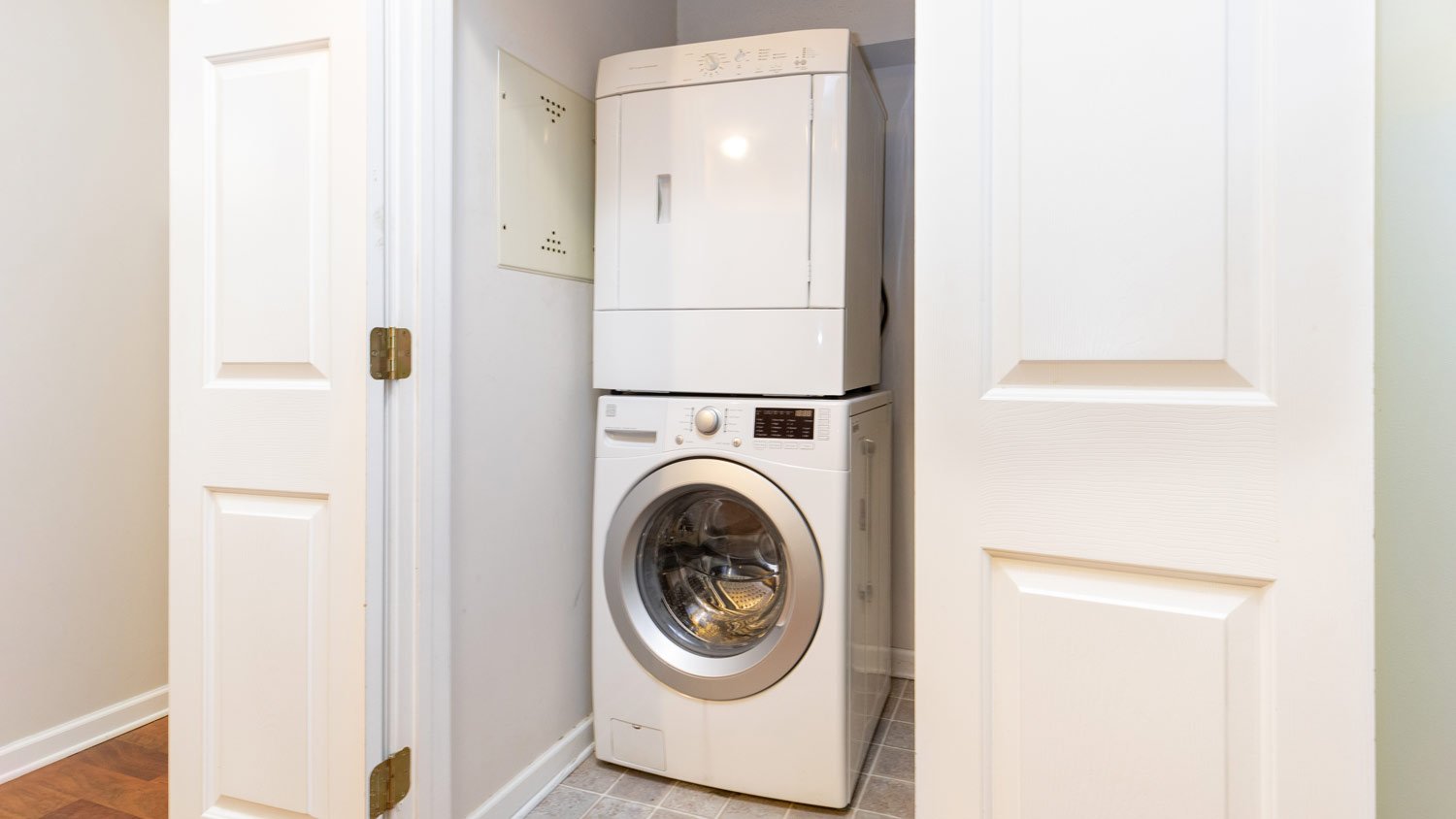
A washer and dryer closet is a convenient laundry solution. We explore common washer and dryer closet dimensions so you can choose the right one for your home.
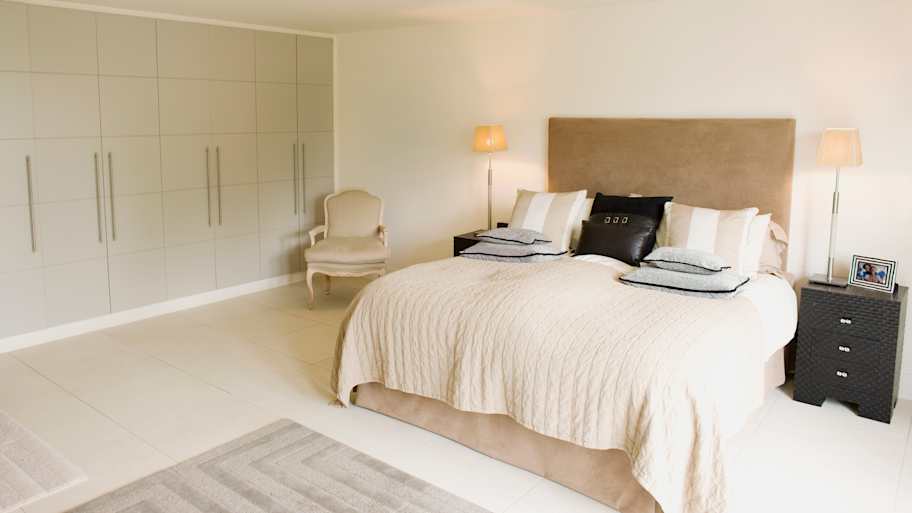
How do you get rid of a musty smell in closets? Use a handful of tricks to ensure these spaces and the clothes in them are always fresh and clean.

What is a built-in closet? Learn about this storage solution and why so many homeowners desire it.